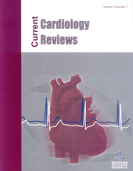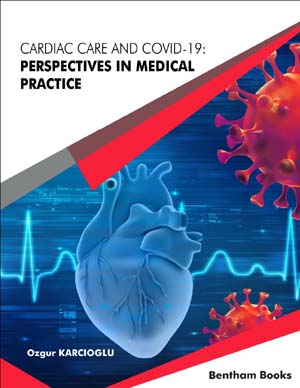Abstract
Due to the fact that atherosclerotic cardiovascular diseases (CVDs) dominate in the structure of morbidity, disability and mortality of the population, the study of the risk factors for the development of atherosclerotic CVDs, as well as the study of the underlying pathogenetic mechanisms thereof, is the most important area of scientific research in modern medicine. Understanding these aspects will allow improving the set of treatment and preventive measures and activities. One of the important risk factors for the development of atherosclerosis, which has been actively studied recently, is air pollution with fine particulate matter (PM 2.5). According to clinical and epidemiological data, the level of air pollution with PM 2.5 exceeds the normative indicators in most regions of the world and is associated with subclinical markers of atherosclerosis and mortality from atherosclerotic CVDs.
The aim of this article is to systematize and discuss in detail the role of PM 2.5 in the development of atherosclerosis and myocardial damage with the consideration of epidemiological and pathogenetic aspects.
Materials and Methods: This narrative review is based on the analysis of publications in the Medline, PubMed, and Embase databases. The terms "fine particles" and "PM 2.5" in combination with "pathophysiological mechanisms," "cardiovascular diseases", "atherosclerosis", "cardiac troponins", "myocardial damage" and "myocardial injury" were used to search publications.
Conclusion: According to the conducted narrative review, PM 2.5 should be regarded as the significant risk factor for the development of atherosclerotic CVDs. The pro-atherogenic effect of fine particulate matter is based on several fundamental and closely interrelated pathophysiological mechanisms: endothelial dysfunction, impaired lipid metabolism, increased oxidative stress and inflammatory reactions, impaired functioning of the vegetative nervous system and increased activity of the hemostatic system. In addition, PM 2.5 causes subclinical damage to cardiac muscle cells by several mechanisms: apoptosis, oxidative stress, decreased oxygen delivery due to coronary atherosclerosis and ischemic damage of cardiomyocytes. Highly sensitive cardiac troponins are promising markers for detecting subclinical myocardial damage in people living in polluted regions.
Keywords: Cardiovascular diseases, atherosclerosis, particulate matter, PM 2.5, pathogenesis, endothelial dysfunction, lipid metabolism, oxidative stress, inflammation, vegetative nervous system.
[http://dx.doi.org/10.1161/ATVBAHA.120.315219] [PMID: 33327745]
[http://dx.doi.org/10.35630/2199-885X/2021/11/1.5]
[http://dx.doi.org/10.47470/0016-9900-2021-100-3-223-228]
[http://dx.doi.org/10.1016/S0140-6736(17)30505-6] [PMID: 28408086]
[http://dx.doi.org/10.3978/j.issn.2072-1439.2015] [PMID: 26904258]
[http://dx.doi.org/10.15829/1728-8800-2021-2539]
[http://dx.doi.org/10.1021/acs.est.8b07141] [PMID: 31041867]
[http://dx.doi.org/10.1136/bmjopen-2013-004743] [PMID: 24710134]
[http://dx.doi.org/10.1136/bmj.l6572] [PMID: 31888884]
[http://dx.doi.org/10.1016/j.envpol.2016.09.065]
[http://dx.doi.org/10.1097/EE9.0000000000000078] [PMID: 33778346]
[http://dx.doi.org/10.1016/j.envpol.2021.116663] [PMID: 33581627]
[http://dx.doi.org/10.1016/j.toxlet.2009.11.008] [PMID: 19913602]
[http://dx.doi.org/10.1016/j.jchf.2015.07.018] [PMID: 26738952]
[http://dx.doi.org/10.1007/s12012-021-09693-8] [PMID: 34533688]
[http://dx.doi.org/10.5094/APR.2014.085]
[http://dx.doi.org/10.1007/s10666-013-9384-0]
[http://dx.doi.org/10.1185/030079904X3348] [PMID: 15462688]
[http://dx.doi.org/10.1016/j.tiv.2019.04.026] [PMID: 31029784]
[http://dx.doi.org/10.1093/ije/dyl132] [PMID: 16844771]
[http://dx.doi.org/10.3390/ijerph13080748] [PMID: 27463723]
[http://dx.doi.org/10.1093/aje/kwu186] [PMID: 25164422]
[http://dx.doi.org/10.1186/1476-069X-12-39] [PMID: 23641873]
[http://dx.doi.org/10.1016/j.chemosphere.2019.125127] [PMID: 31683440]
[http://dx.doi.org/10.1002/jat.3828] [PMID: 31273799]
[http://dx.doi.org/10.1016/j.chemosphere.2018.11.149] [PMID: 30502696]
[http://dx.doi.org/10.1021/tx5003723] [PMID: 25560372]
[http://dx.doi.org/10.1080/08958370304460] [PMID: 12635002]
[http://dx.doi.org/10.1080/10937404.2012.632359] [PMID: 22202227]
[http://dx.doi.org/10.1289/EHP2182] [PMID: 29467104]
[http://dx.doi.org/10.1093/eurheartj/ehr195] [PMID: 21753226]
[http://dx.doi.org/10.1097/EDE.0b013e3181812bb7] [PMID: 18714438]
[http://dx.doi.org/10.1289/ehp.7523] [PMID: 15687058]
[http://dx.doi.org/10.1161/CIRCULATIONAHA.112.096164] [PMID: 22896588]
[http://dx.doi.org/10.1016/j.jacc.2010.04.065] [PMID: 21087707]
[http://dx.doi.org/10.1371/journal.pmed.1001430] [PMID: 23637576]
[http://dx.doi.org/10.1093/aje/kwm359] [PMID: 18227099]
[http://dx.doi.org/10.1089/jwh.2018.7182] [PMID: 30730252]
[http://dx.doi.org/10.1161/CIRCULATIONAHA.107.693622] [PMID: 17638927]
[http://dx.doi.org/10.1016/S0140-6736(16)00378-0] [PMID: 27233746]
[http://dx.doi.org/10.1097/EDE.0b013e3181961ac2] [PMID: 19194299]
[http://dx.doi.org/10.1093/eurheartj/eht426] [PMID: 24194529]
[http://dx.doi.org/10.1161/CIR.0b013e3181dbece1] [PMID: 20458016]
[http://dx.doi.org/10.1289/ehp.1104049] [PMID: 22313724]
[http://dx.doi.org/10.1186/s12940-016-0111-6] [PMID: 26864652]
[http://dx.doi.org/10.1186/s12940-019-0518-y] [PMID: 31601202]
[http://dx.doi.org/10.1093/ehjci/jeaa073] [PMID: 32356862]
[http://dx.doi.org/10.1164/rccm.201205-0850OC] [PMID: 22936356]
[http://dx.doi.org/10.1001/jama.2012.3488] [PMID: 22665106]
[http://dx.doi.org/10.1016/j.ecoenv.2021.112485] [PMID: 34246944]
[http://dx.doi.org/10.1161/01.ATV.19.11.2648] [PMID: 10559007]
[http://dx.doi.org/10.3324/haematol.2019.225086] [PMID: 31672903]
[http://dx.doi.org/10.1038/s41569-019-0169-2] [PMID: 30846875]
[http://dx.doi.org/10.17513/ejnh.34123]
[http://dx.doi.org/10.1161/JAHA.115.002270]
[http://dx.doi.org/10.1161/HYPERTENSIONAHA.109.130237] [PMID: 19620518]
[http://dx.doi.org/10.1016/j.jacc.2012.08.973] [PMID: 23103035]
[http://dx.doi.org/10.1161/CIRCRESAHA.116.309279] [PMID: 27780829]
[http://dx.doi.org/10.1165/rcmb.2008-0402OC] [PMID: 19520919]
[http://dx.doi.org/10.1001/jamanetworkopen.2019.6553] [PMID: 31251382]
[http://dx.doi.org/10.1016/j.jes.2017.05.019] [PMID: 29628085]
[http://dx.doi.org/10.1080/08958370701495212] [PMID: 17886056]
[http://dx.doi.org/10.1172/JCI9259] [PMID: 10772649]
[http://dx.doi.org/10.1016/j.ecoenv.2019.03.068] [PMID: 30921699]
[http://dx.doi.org/10.1016/j.ijcard.2015.02.007] [PMID: 25703423]
[PMID: 17215962]
[http://dx.doi.org/10.1097/EE9.0000000000000157] [PMID: 34131618]
[http://dx.doi.org/10.3390/atmos12080947]
[http://dx.doi.org/10.1161/CIRCULATIONAHA.116.026796] [PMID: 28808144]
[http://dx.doi.org/10.18632/oncotarget.23347] [PMID: 29423081]
[http://dx.doi.org/10.1016/j.envpol.2019.113403] [PMID: 31711721]
[http://dx.doi.org/10.1016/j.envint.2018.11.001] [PMID: 30446244]
[http://dx.doi.org/10.1161/ATVBAHA.116.308193] [PMID: 28408373]
[http://dx.doi.org/10.1186/s12989-020-00367-x] [PMID: 32753036]
[http://dx.doi.org/10.1186/s12989-016-0139-3] [PMID: 27221567]
[http://dx.doi.org/10.1194/jlr.M044552] [PMID: 24212237]
[http://dx.doi.org/10.1161/CIRCULATIONAHA.112.108753] [PMID: 23349247]
[http://dx.doi.org/10.1001/jama.294.23.3003] [PMID: 16414948]
[http://dx.doi.org/10.1016/j.toxlet.2018.03.022] [PMID: 29571893]
[http://dx.doi.org/10.1161/CIRCRESAHA.115.304666] [PMID: 25186795]
[http://dx.doi.org/10.1016/j.biopha.2018.08.148] [PMID: 30257374]
[http://dx.doi.org/10.1016/j.envpol.2017.06.051] [PMID: 28649040]
[http://dx.doi.org/10.1038/nrneph.2017.51] [PMID: 28392564]
[http://dx.doi.org/10.1016/j.envint.2020.105830] [PMID: 32585499]
[http://dx.doi.org/10.1016/j.envpol.2019.03.045] [PMID: 30928520]
[http://dx.doi.org/10.1016/j.tiv.2019.03.013] [PMID: 30858030]
[http://dx.doi.org/10.1016/j.yrtph.2015.09.034] [PMID: 26474868]
[http://dx.doi.org/10.1111/obr.12242] [PMID: 25586506]
[http://dx.doi.org/10.1016/j.bbagen.2016.04.030] [PMID: 27156486]
[http://dx.doi.org/10.1152/ajpendo.00549.2013] [PMID: 24473437]
[http://dx.doi.org/10.1186/1743-8977-11-27] [PMID: 24886175]
[http://dx.doi.org/10.4239/wjd.v5.i3.357] [PMID: 24936256]
[http://dx.doi.org/10.3390/ijms222010928] [PMID: 34681585]
[http://dx.doi.org/10.1016/j.jjcc.2013.11.006] [PMID: 24355497]
[http://dx.doi.org/10.3390/ijms22115446] [PMID: 34064112]
[http://dx.doi.org/10.3389/fendo.2013.00071] [PMID: 23781214]
[http://dx.doi.org/10.2147/VHRM.S300002] [PMID: 34113117]
[http://dx.doi.org/10.15829/1560-4071-2020-4061]
[http://dx.doi.org/10.1186/s12940-016-0130-3] [PMID: 27015811]
[http://dx.doi.org/10.1136/heartjnl-2011-301505] [PMID: 22628541]
[http://dx.doi.org/10.1016/j.ijcard.2014.07.012] [PMID: 25074558]
[http://dx.doi.org/10.3390/ijerph13050484] [PMID: 27187431]
[http://dx.doi.org/10.1016/j.envpol.2019.113306] [PMID: 31733955]
[http://dx.doi.org/10.1016/j.ijheh.2016.05.008] [PMID: 27318724]
[http://dx.doi.org/10.1289/ehp.1307151] [PMID: 24240275]
[http://dx.doi.org/10.1016/j.envres.2017.10.036] [PMID: 29102669]
[http://dx.doi.org/10.23736/S1825-859X.21.00107-9]
[http://dx.doi.org/10.18087/cardio.2019.11.n414]
[http://dx.doi.org/10.1097/00041433-199910000-00006] [PMID: 10554704]
[http://dx.doi.org/10.2147/VHRM.S315376] [PMID: 34366667]
[http://dx.doi.org/10.1007/s11883-016-0632-z] [PMID: 27822682]
[http://dx.doi.org/10.1007/s40256-015-0128-1] [PMID: 26062915]
[http://dx.doi.org/10.1001/jama.281.10.921] [PMID: 10078489]
[http://dx.doi.org/10.1161/ATVBAHA.111.236158] [PMID: 22904273]
[http://dx.doi.org/10.1007/s11906-011-0195-x] [PMID: 21331606]
[http://dx.doi.org/10.18705/1607-419X-2021-27-4-390-401]
[http://dx.doi.org/10.1161/01.CIR.0000053568.13058.67] [PMID: 12615802]
[http://dx.doi.org/10.1172/JCI30639] [PMID: 17885684]
[http://dx.doi.org/10.1186/1743-8977-4-1] [PMID: 17241467]
[http://dx.doi.org/10.1111/j.1538-7836.2007.02300.x] [PMID: 17083648]
[http://dx.doi.org/10.1186/s12890-021-01650-z] [PMID: 34537026]
[http://dx.doi.org/10.1186/s12989-017-0237-x] [PMID: 29298690]
[http://dx.doi.org/10.22514/sv.2021.050]
[http://dx.doi.org/10.5867/medwave.2021.11.002132]
[http://dx.doi.org/10.1093/eurheartj/suab092] [PMID: 34650358]
[http://dx.doi.org/10.2147/VHRM.S327661] [PMID: 34584417]
[http://dx.doi.org/10.15829/1728-8800-2021-2590]




















